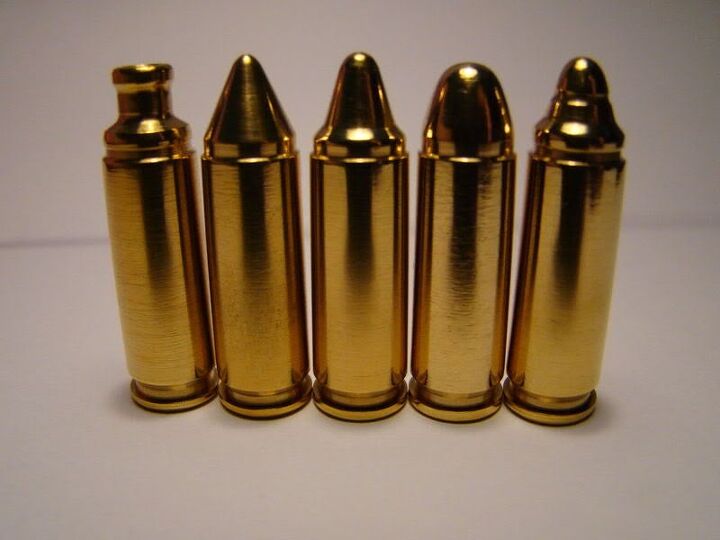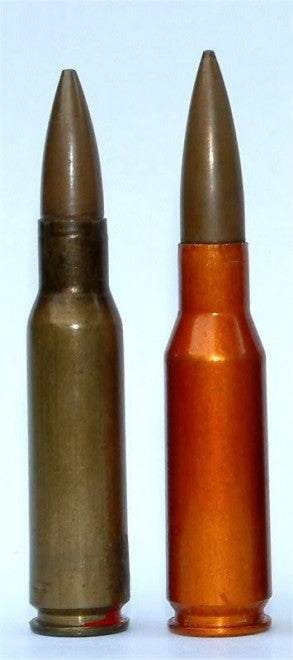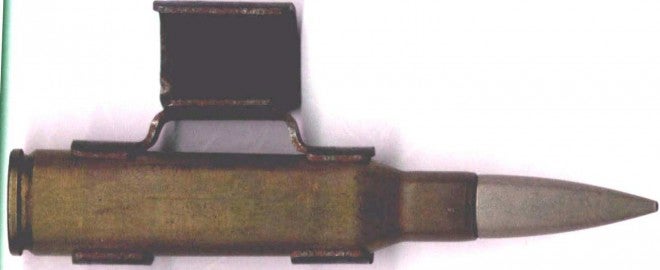Aren’t there enough calibers in the world? Is there really a need for any new entries into the endless list of different kinds of ammunition that have been created? This argument makes a lot of sense; with virtually every nook and cranny in the spectrum of different possible small arms calibers being filled in some form or another, isn’t is a bit presumptuous to suggest the introduction of something new?
Well, yes and no. It’s certainly true that for every new caliber idea, there are ten different precedents from history, proving someone else has “been there and did that”. So, what about taking a look at those obsolete calibers? Are there any gaps in the current suite of production calibers that could be filled be one of them? I think there might be…
.270 British: A Forgotten All-‘Rounder
After the end of World War II, the British were seeking to re-equip and replace their obsolete .303 caliber Lee-Enfield pattern rifles with a more modern rifle design, and with a new modern caliber to match. They would decide on, and push NATO to adopt, a 7mm caliber cartridge better known as the .280 British, but prior to that, they had developed other calibers during the exploratory phase of research. One of the calibers developed – and eventually rejected – was the .270 British, a cartridge based on a 1.81″ long .445″ diameter case (a size common to the 7.62×39 and 7.35×51 Carcano) with a 6.8mm bullet.
The .270 was expected to produce about 2,730 ft/s with a steel-cored 100gr bullet – performance roughly comparable with the 6.8 SPC available today. However, the case of the .270 is both wider and longer than that of the 6.8 SPC, implying that significantly better performance is possible (the relatively large case of the .270 was due to a requirement that, if needed, velocity could be safely increased to 2,900 feet per second!). Further, unlike the 6.8 SPC when used in micro-action guns, the .270 – when used with short-action rifles – would be able to accept all bullets compatible with the .270 Winchester, making it a shoe-in for a mid-sized game hunting rifle, as well as reloader friendly. The possibility of even longer bullets than are currently made for the .270 Winchester means the .270 British could hit above its weight and recoil class, allowing it to take virtually any game suitable for harvest with a .308.
Versus the 6.8 SPC, it would not be compatible with the AR-15 platform, and so wouldn’t be well-suited to the tactical market. The hunting potential of the round, though, gives this old military has-been some promise.
7.92x24mm VBR: Pocket Handgun Power
It may be too early to call this round – relatively recently developed by VBR of Belgium for military personal defense weapons – “obsolete”, but very little activity has been seen from its parent company in the past few years. Even so, it is a round that has caught my attention, for two reasons: The first being its smaller case head than 9mm (it is based on the .30 Carbine), and the second being its relatively high muzzle velocity.
The smaller case head means that, for a given peak pressure when firing, the cartridge will produce less bolt thrust and stress the locking components of a weapon less. Alternately, it means a higher pressure can be used for the same bolt thrust. With this round, there is considerable potential for a smaller pocket pistol than would be possible with 9mm, but that is more powerful and capable than one chambered in .380 ACP.
The muzzle velocity of this round, too, is significant. The “short” version of the 7.92×24 produces over 1,500 ft/s from a 4″ barrel with the same 71gr FMJ common to the .32 ACP. This compares well to the .380 ACP (producing about 1,000 ft/s) and even the 9mm (topping out at 1,400 ft/s, typically). This additional velocity could help ensure the expansion of hollow point projectiles even when penetrating through ribs and other obstacles, and would also give the 7.92×24 additional soft tissue penetration versus the .380 ACP, which can be marginal in this respect with JHP bullets.
As a general purpose handgun round, the 7.92 VBR does not offer too much over 9mm; one could argue it is superior, but it’s not by a significant enough degree to end a 100+ year reign. However, in the specialized pocket pistol role, it does seem pretty attractive, especially when compared to the .380.
9x66mm MAS: Medium Machine Gun Revenant
There has been some talk of replacing 7.62mm machine guns with a larger caliber weapon, including the initiation of the Lightweight Dismounted Automatic Machine Gun (LDAM) program by the U.S. Army. What should a bigger machine gun round look like? The French had an answer to that question in the 1930s, with the 9x66mm MAS.
Designed between 1930 and 1936 to meet surprisingly similar requirements – create a machine gun in a caliber between 7.5 and 11mm caliber to replace 13.2mm machine guns and complement 7.5mm ones – the 9x66mm was essentially a scaled-up rifle round. It fired a 20 gram (309 grain) bullet at 780 m/s (2,560 ft/s), giving it exceptional sectional density and long-range hitting power. Further, as with the .270, the 9x66mm by way of comparison to the .338 Norma is clearly capable of higher performance even than this. A somewhat lighter, modern lead-free A1-style bullet fired at a higher muzzle velocity would give the round excellent versatility, and the overall length and case head diameter are very similar to that of the .338 Lapua, possibly allowing weapons designed for that round , such as Bad News style semi-automatic rifles or General Dynamics’ Lightweight Medium Machine Gun (LWMMG), to be rechambered for the French 9mm.
Versus the .338 Lapua or .338 Norma, the 9×66 would offer more volume for lead-free, steel-core, and specialized projectiles, while reducing barrel wear and retaining much of the former two cartridges’ positive long range characteristics. These characteristics would benefit both dismounted and mounted applications; in addition to adding long-range firepower in the infantry crew-served weapon role, it would increase the number of targets that could be engaged by an armored fighting vehicle’s coaxial or roof-mounted machine gun, and possibly eliminate the need for additional .50 caliber weapons on AFVs.
Am I seriously suggesting long-dead rounds be resurrected in painstaking detail for the sake of it, to fill these niches? No, of course not. It’s just interesting to see what might have been, or even what has foreshadowed (thought we don’t know it) the future.
What unfilled niches that I didn’t cover do you think could be exploited? What rounds do you think deserve a comeback? Let us know in the comments!
 Your Privacy Choices
Your Privacy Choices


